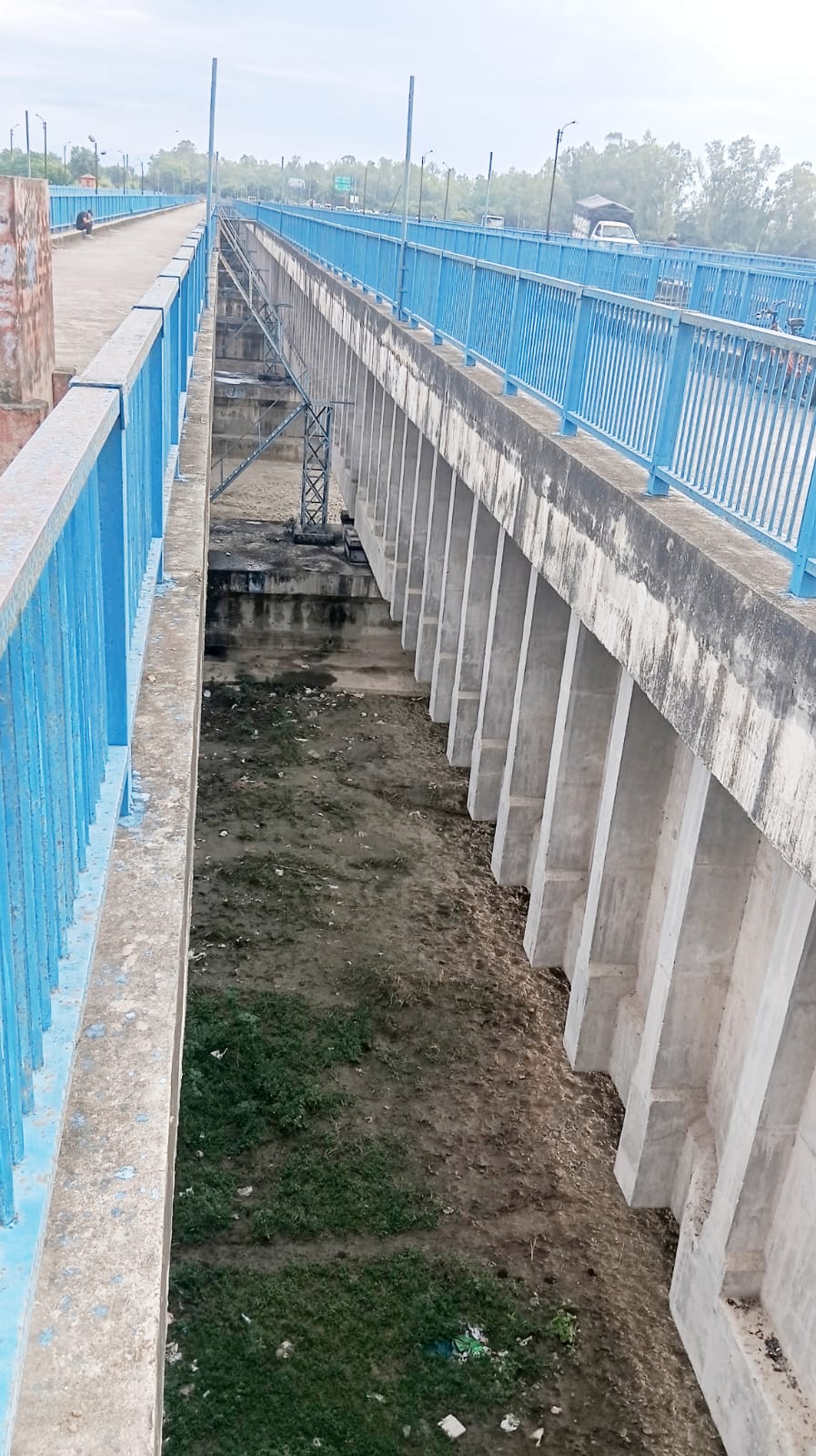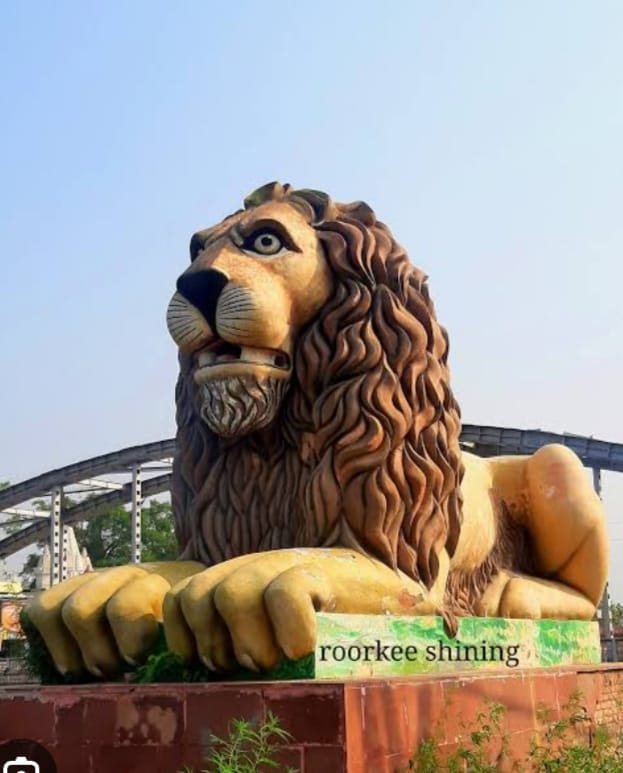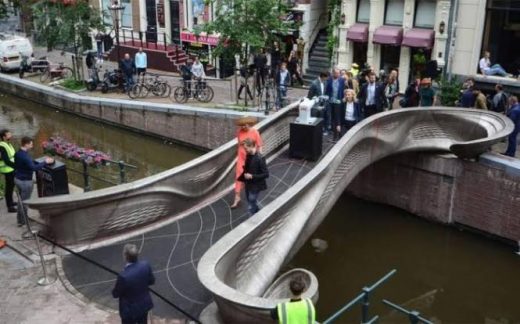By
Kaushal Kishore
Materials Engineer, Roorkee
The new Solani aqueduct on Ganges canal Roorkee was built with prestressed concrete which allows for longer spans and a simple more robust design compared to old bricks, lime- surkhi mortar masonry arches of the old aqueduct, in which 8.5 crores bricks were used, while iron railing used in the sides of two lanes were imported from England. This is interesting to note that materials bringing those days on ship from England to Indian ports take 6-10 weeks via the Suez canal or 3 to 6 months via the longer Cape of Good Hope. Calculate in it also time taken on road from Indian ports to Roorkee.
After retirement from University of now IIT Roorkee I joined M/S Roffe Construction Chemicals Pvt.Ltdd, Mumbai as it’s Chief Concrete Technologists afterwards I became it’s one of the Director.

AQUEDUCT picture taken on 7/10/2025
For the contractor of above aqueduct I designed M-40 grade of concrete with Roffe superpladticizer. Those interested may read my paper by visiting Google site and log in; Civil engineering portal The Ganges canal by Kaushal Kishore.
I had designed numerous concrete mix design almost all cements of India in this I find Utra Tech cement as one of best cement OPC and PPC both With Ultratech cement I had designed numerous concrete mixes from ordinary strength to M-80 grade concrete, self compacting concrete, shot crete concrete, fibre reinforced concrete, fly ash concrete and more There is life after retirement and after retirement I worked for 30 year’s which includes in free time working in home research and testing laboratory and numerous construction sites visits almost all India and outside India. At my age of 92 years I still work for 12 hours daily.
I had never worked for money. In spite of doing so gigantic work what to say about car I even do not have 2 wheeler not any of my house not a single inch of land in this world only pension from IIT Roorkee and few clothes


























hello there
i m in a final year of civil engineering,and i am interested in construction management, can anyone help me to improve my management skills ?
Hello sir, i’ve completed civil under graduation.. I like structural engineering.. So want to persui mtech in it.. But Nowdays many r saturated in that stream.. So may i know whether i can get good job after mtech..?
i want to know the scope of civil engineering in india.
pls help me.what would be the salary of civil engineers in india?
am in ma 2nd yr.i wnt steps 2 folow so as 2 b a successful civil engr
just do perfect the basics.
i just passed out 12th and i have taken civil branch n wanna know that there is a scope in civil engineering ?
is there will be scope in future also ;please tell me
yes bro. civil engineering not only in India it has also a wide rage of success in abroad also……….so go ahead without any hesitation………….
rehabilatation of old structures… if you are looking for easy topic.
i am at high scholl atm and i am planning to become a civl engineer. what subjects am i recommended to take
for an engineering course admission u should pas non medical or diploma in civil engineering,,,,,,,after that u have lot of choice in civil engineering branch also ..like structure engg,,bridge design,geotech etc..
also, what is a big famous civil engineering firm i would dream of workin in
it depends on project
Now i am in last year diploma in civil engg. Can i take direct second year/first year admission to B.ARCH degree?plz help me…….
ya u can get admission in direct 2nd year but condition is that u should have above 60% in last year.
i am a studend prepairing a paper on climatic adaptions in infrastructour enggineering can any one help me with some mater
I’m in 3rd year civil and want to do internship/training in field work. Kindly, tell me where and how shall I apply without any recommendation. I have credit for this training in my syllabus.
for applying the internship to company you need the collage letter for training.
I Have passed std 12th this year and took admission for civil engg….Could u please tell me is there opportunity for girls in CIVIL ENGG???????
girls having lot of opportunity in civil in designing field
structural-designing section but u should have field experience for minimum of 2yrs for proper designing…. there many more opportunities
Yes you have very good opportunity in civil.You can go for design or environmental
will sum one pls tell me what is the minimum percentage required to do masters in civil engineering
Depends on colleges in which u want to do masters…
what are the are the precautions used in the test for moisture content.
May I ask for a doubt? What is the manimum wc ratio to get a perfect hydration in cement?
0.4-0.5
sir is the work of b-tech in civil and b-arch diff or sme .
if different thn what is the diff??????????
pls help
B tech civil and b-arch are different.B tech civil is four years whereas b-arch is five years.B-arch mostly deals with design whereas in civil you will learn all basics about construction
my biggest aspiration is to become a design engineer and i want to be a part of the historical structure in INDIA.Now i am doing my pre final year in CIVIL
What is shear force and bending moment?
please send types of vibrator & use in different work
I am in final year B.TECH plz suggest me seminar topic.